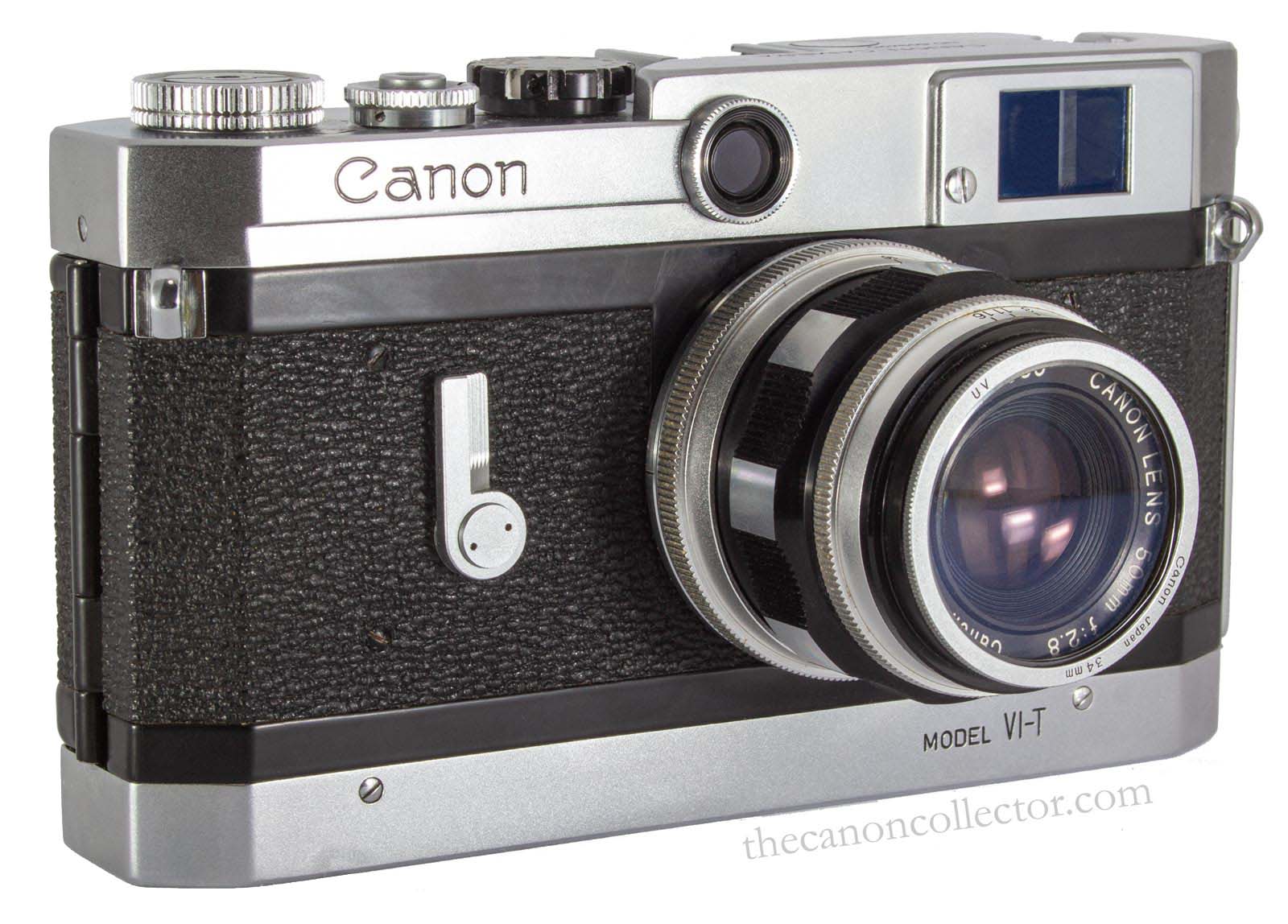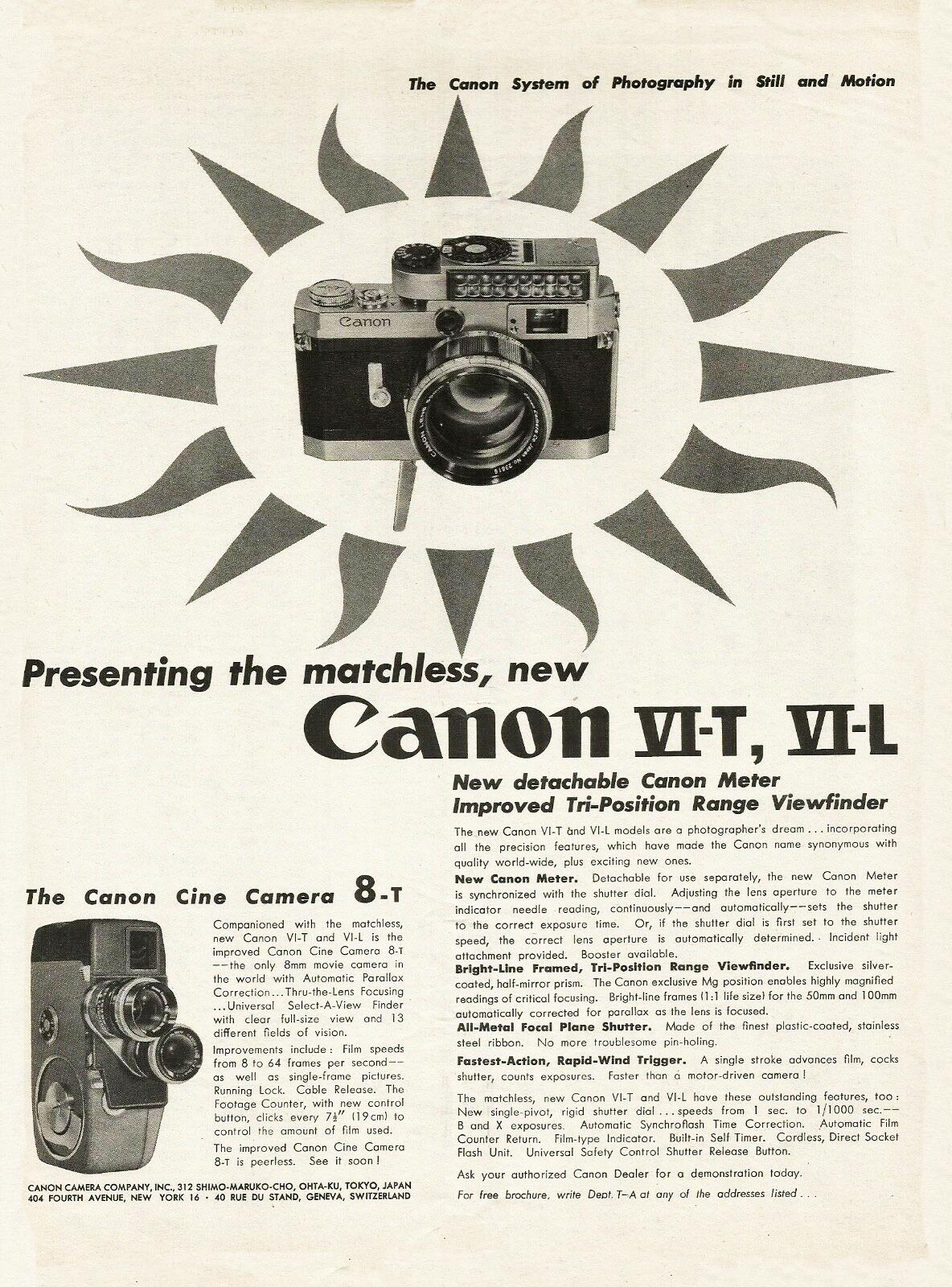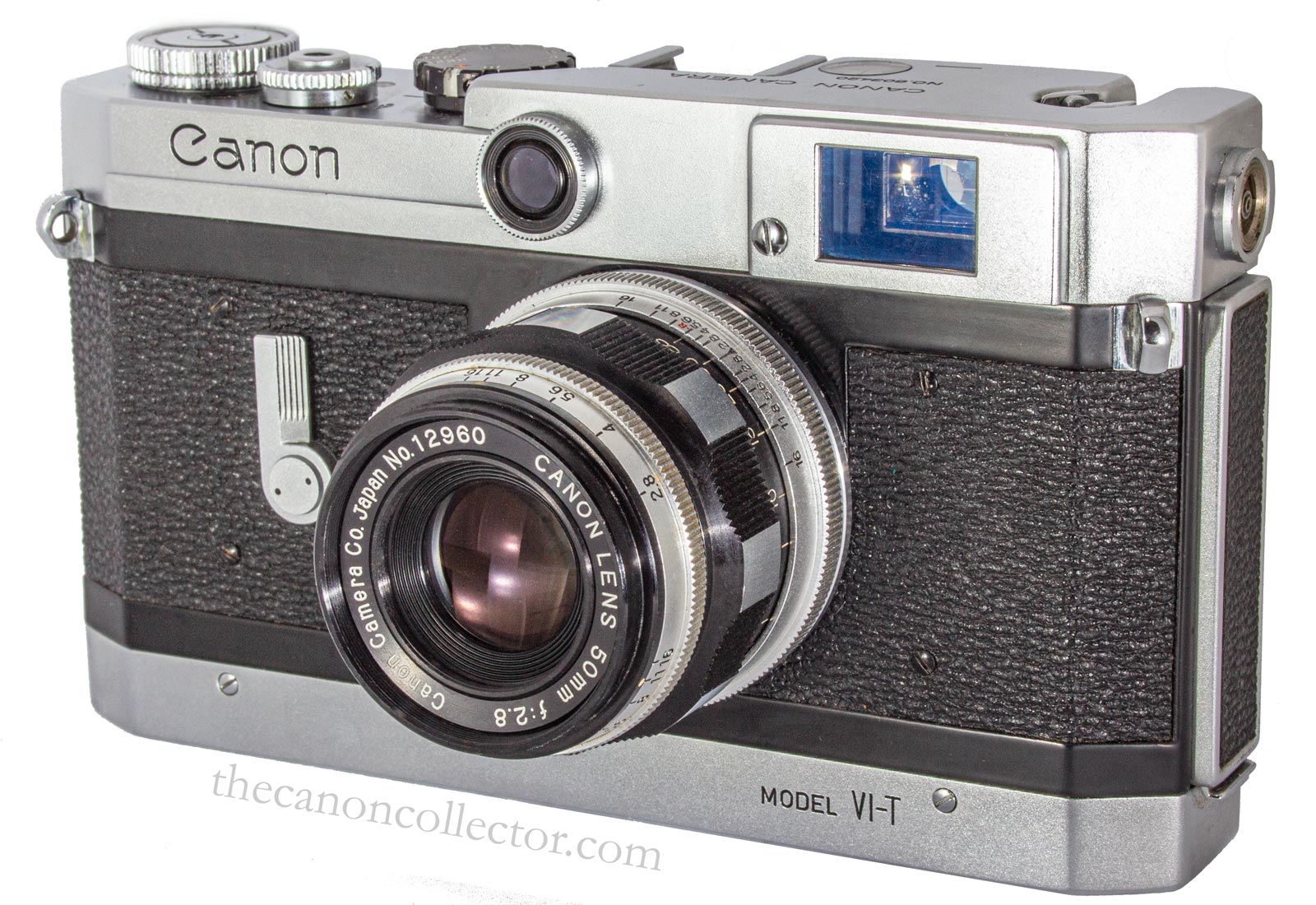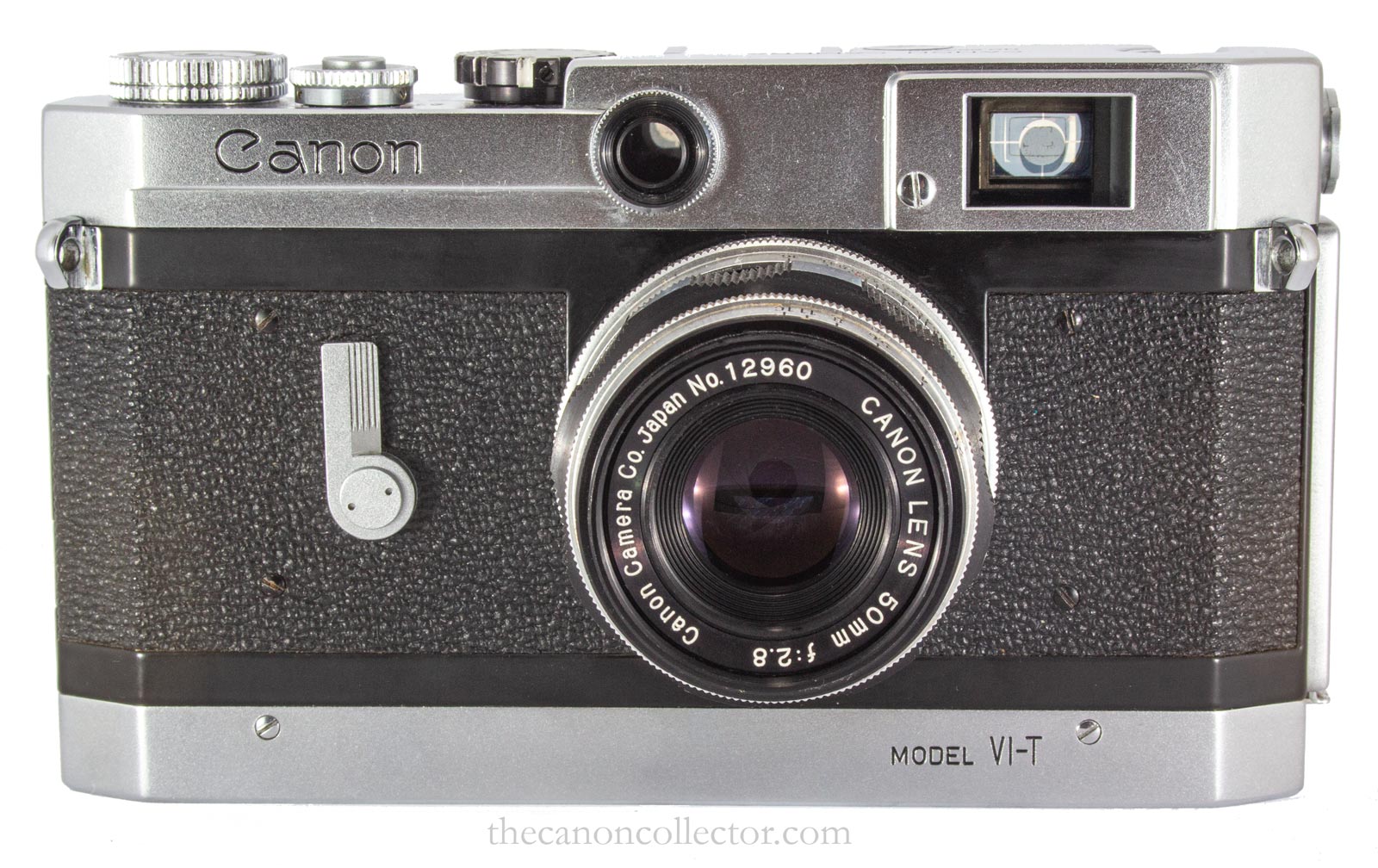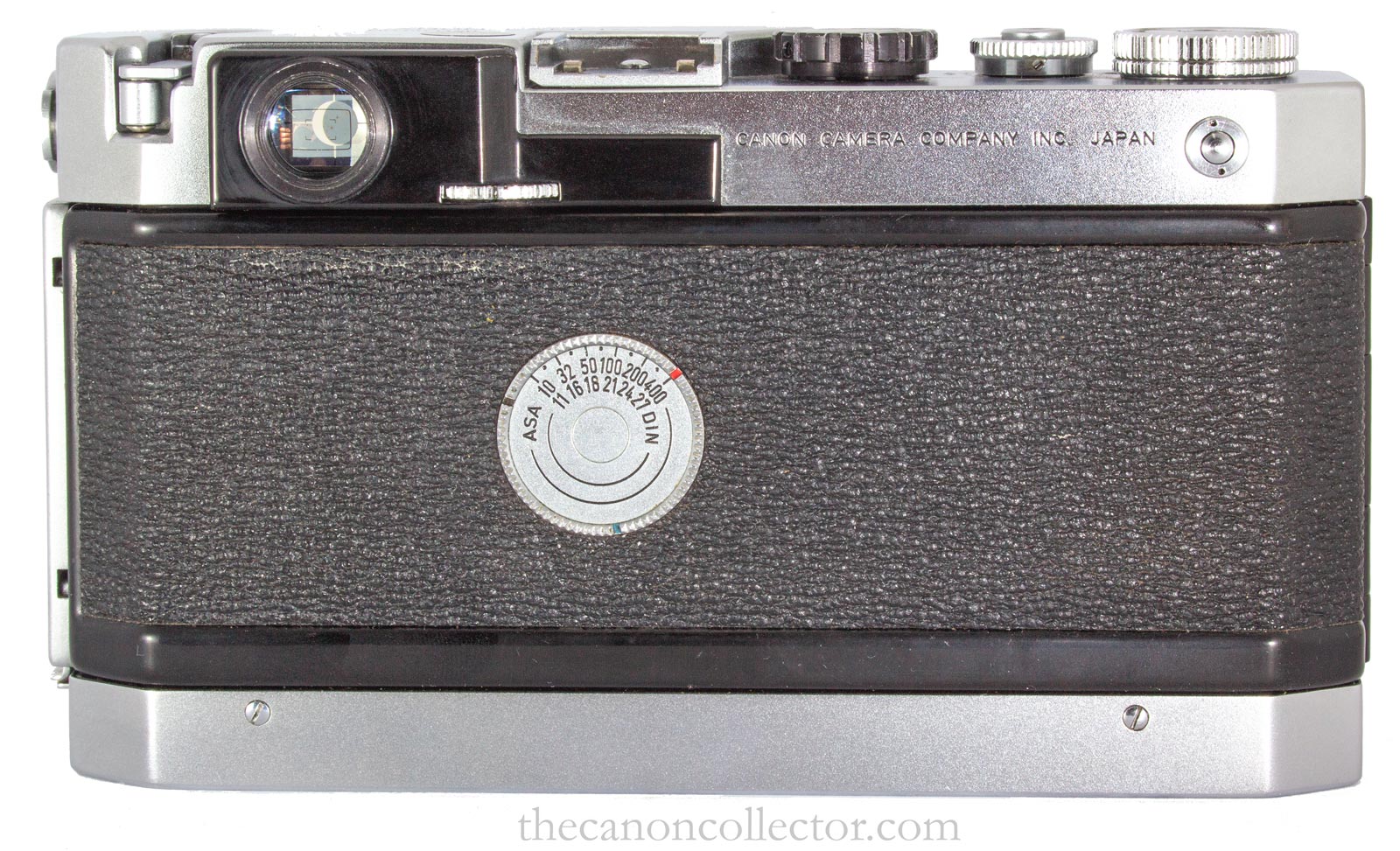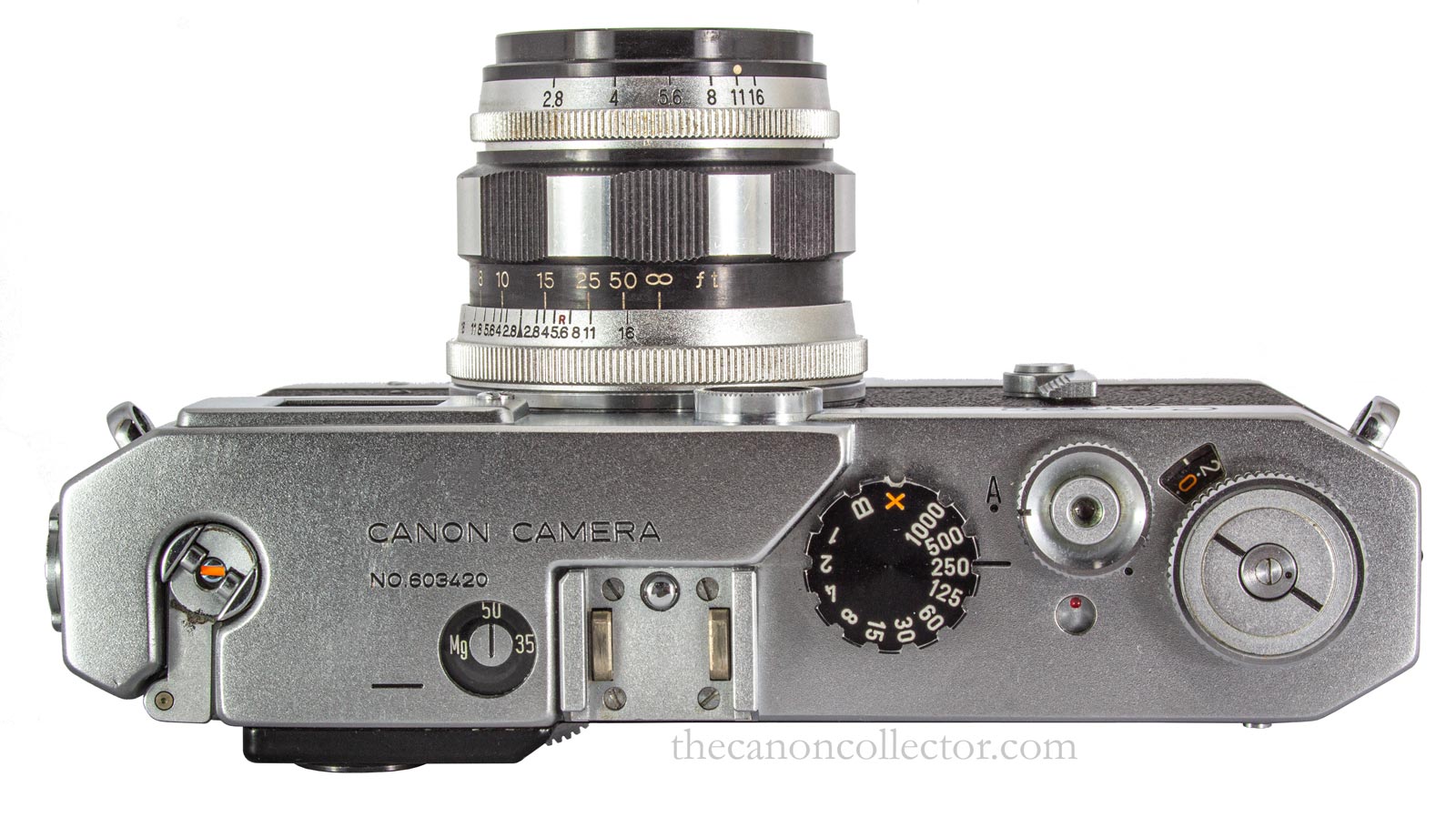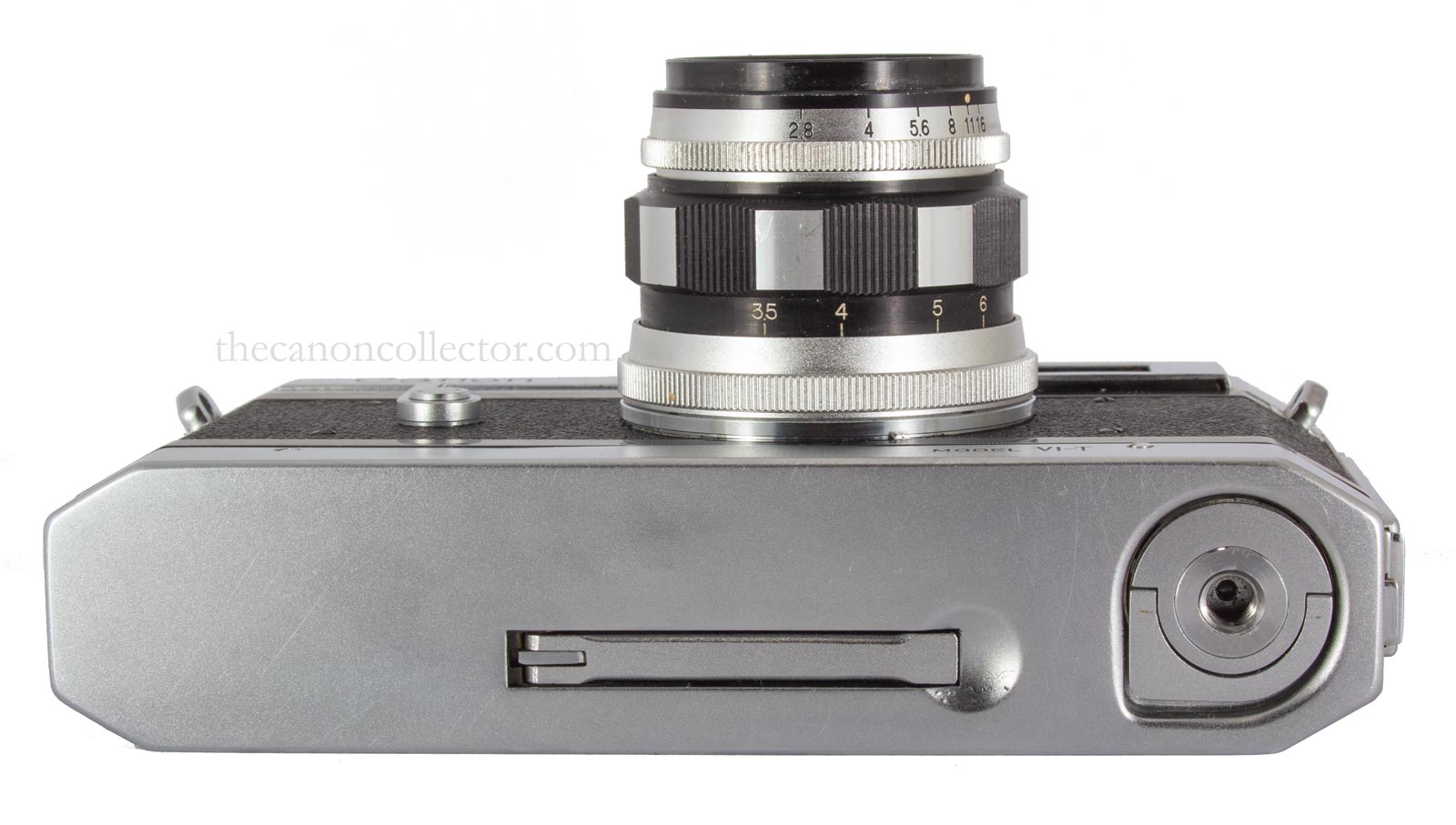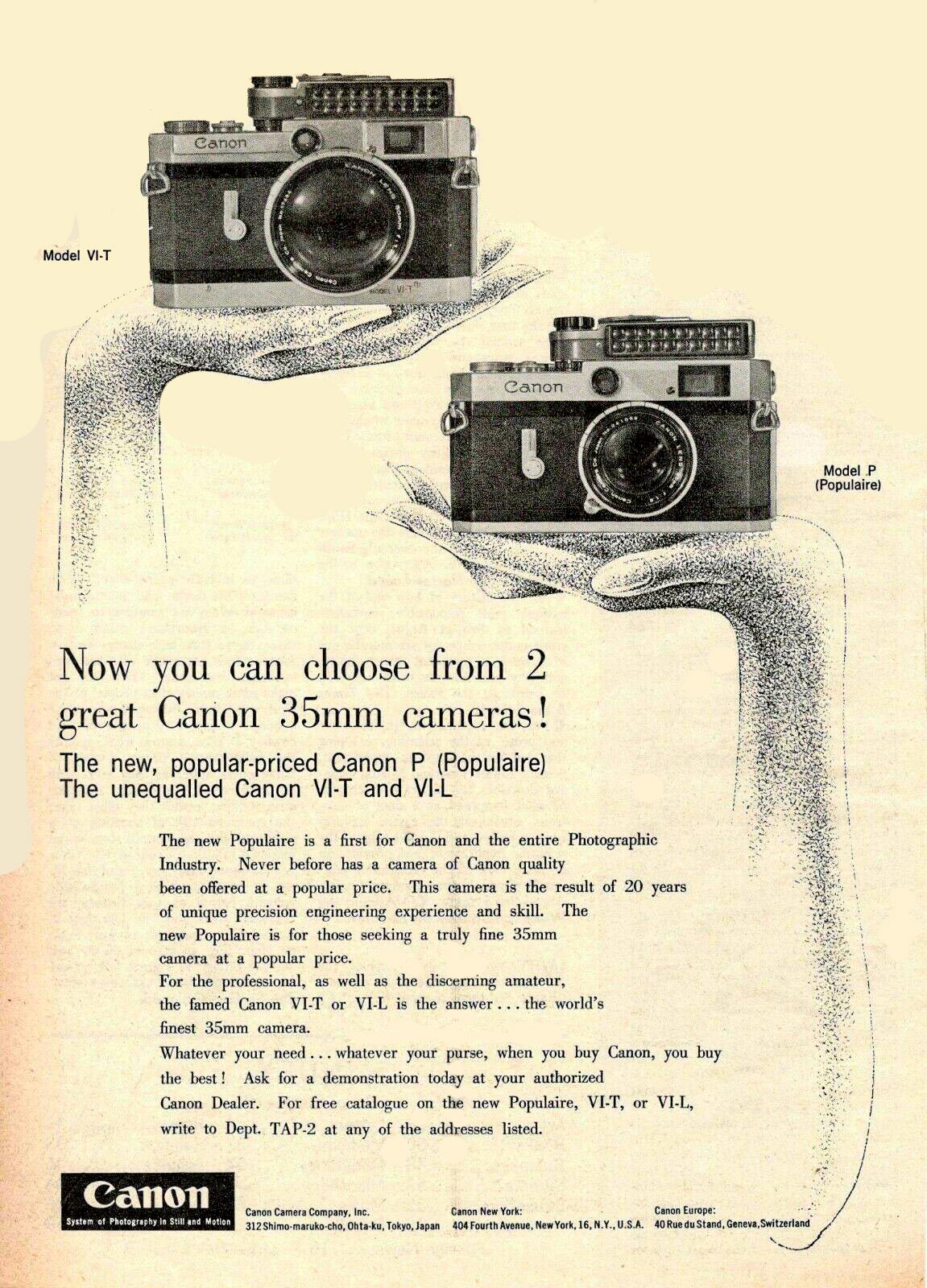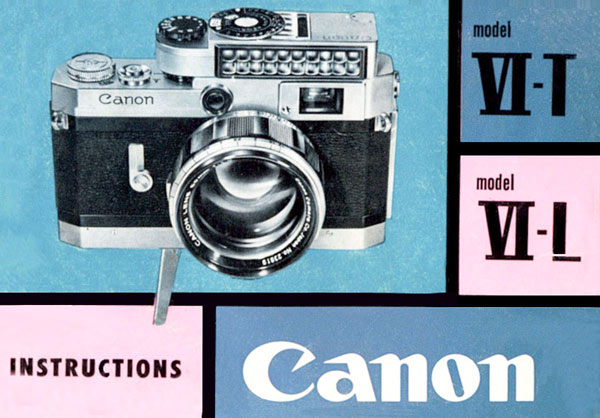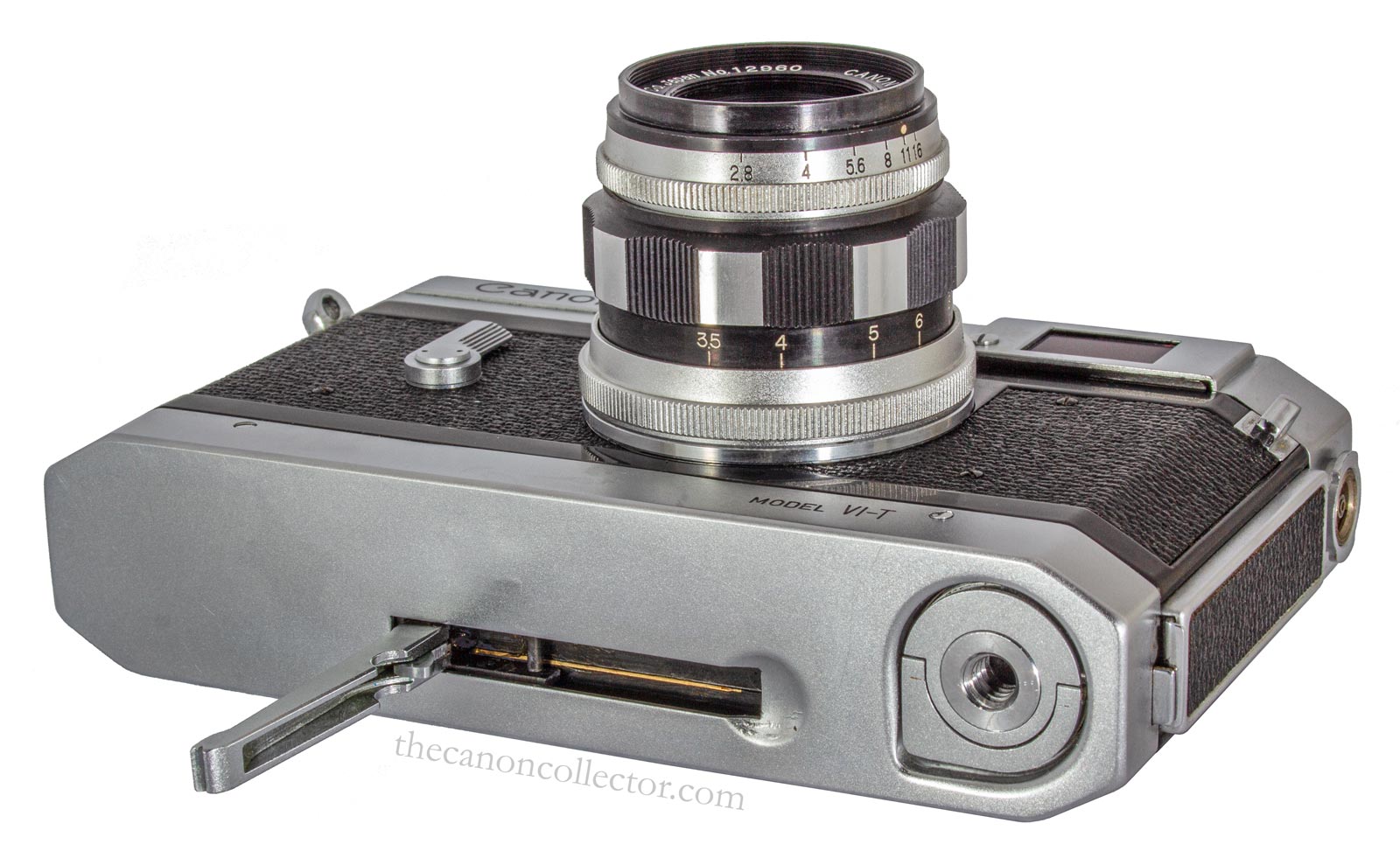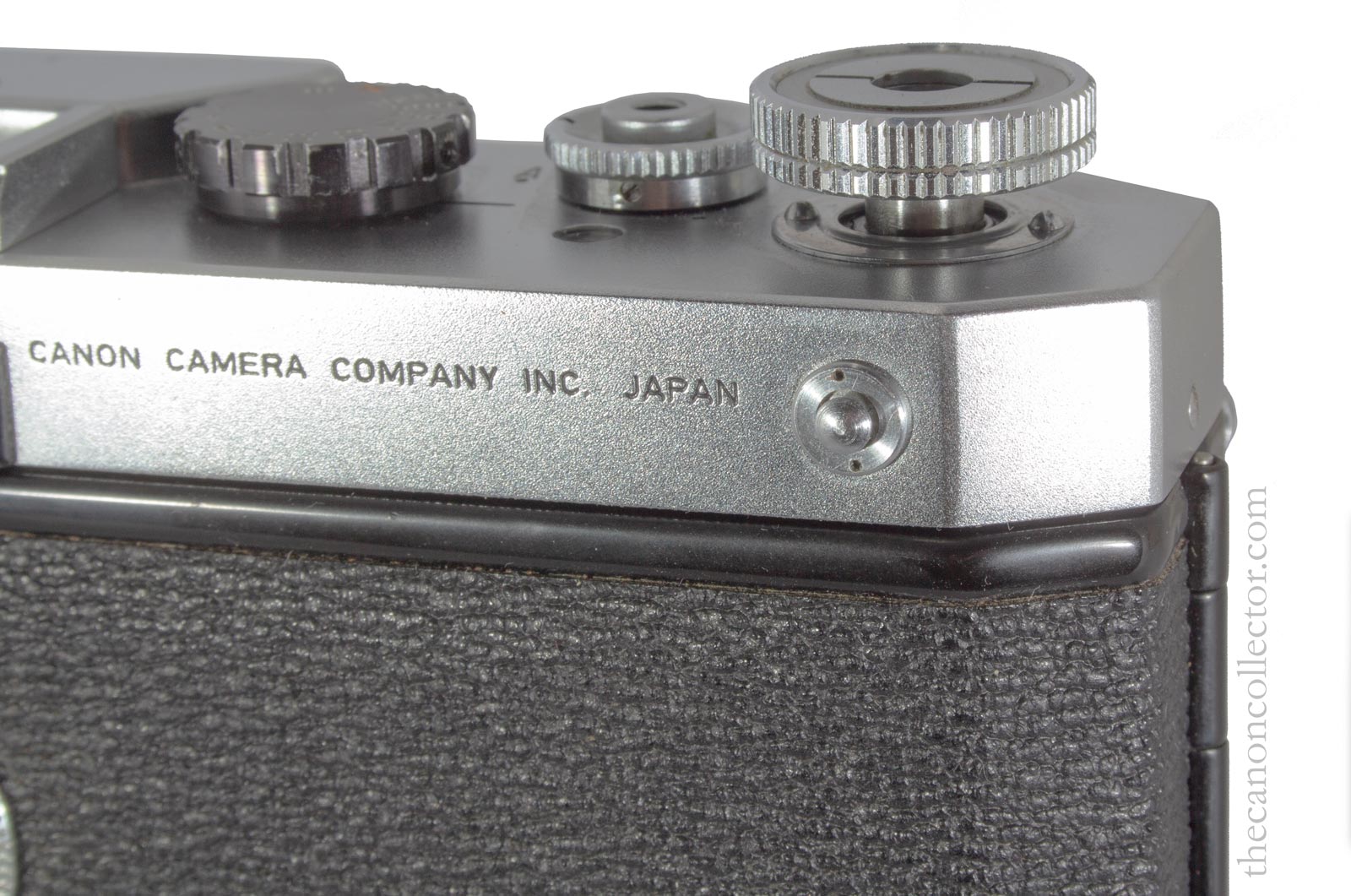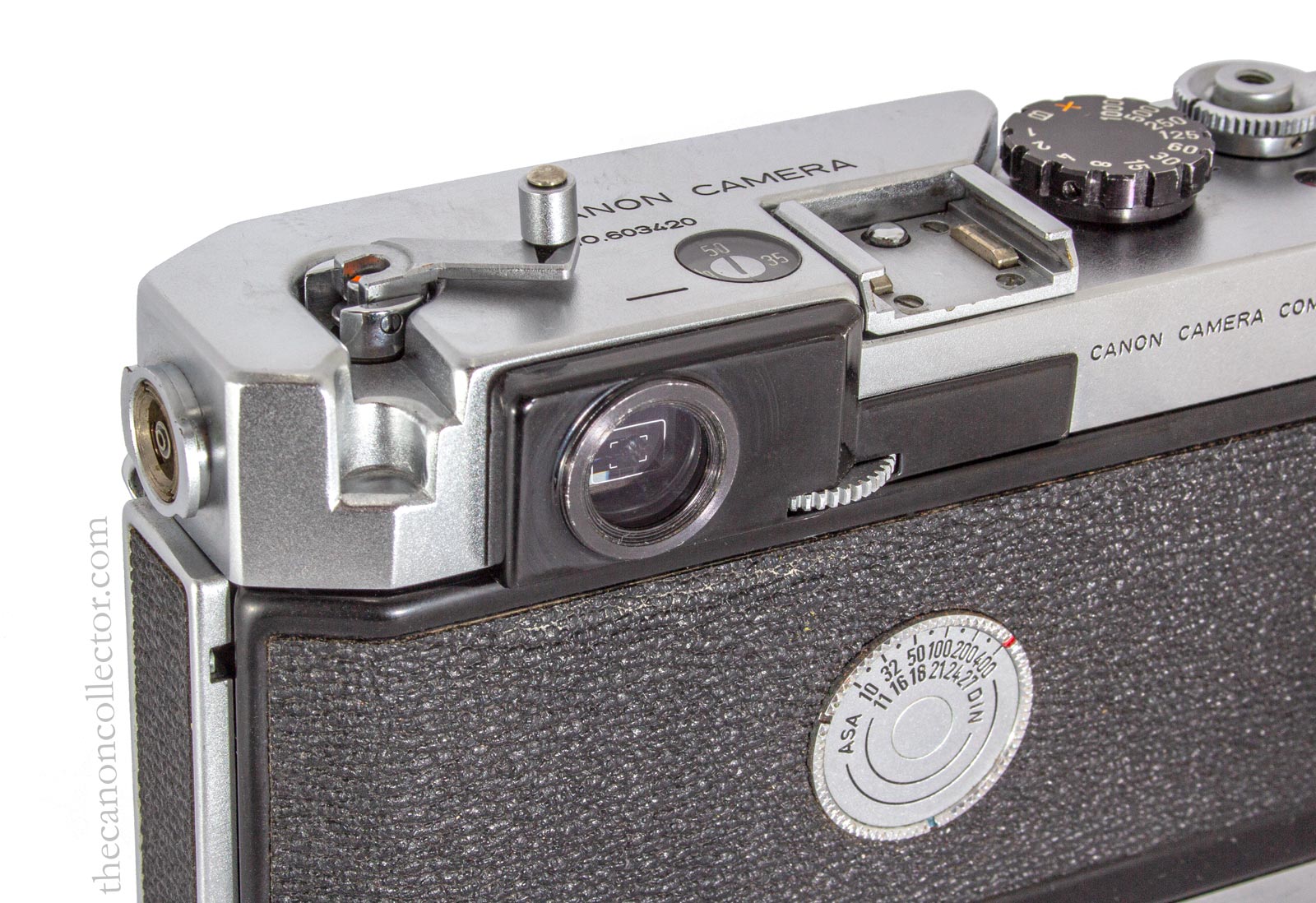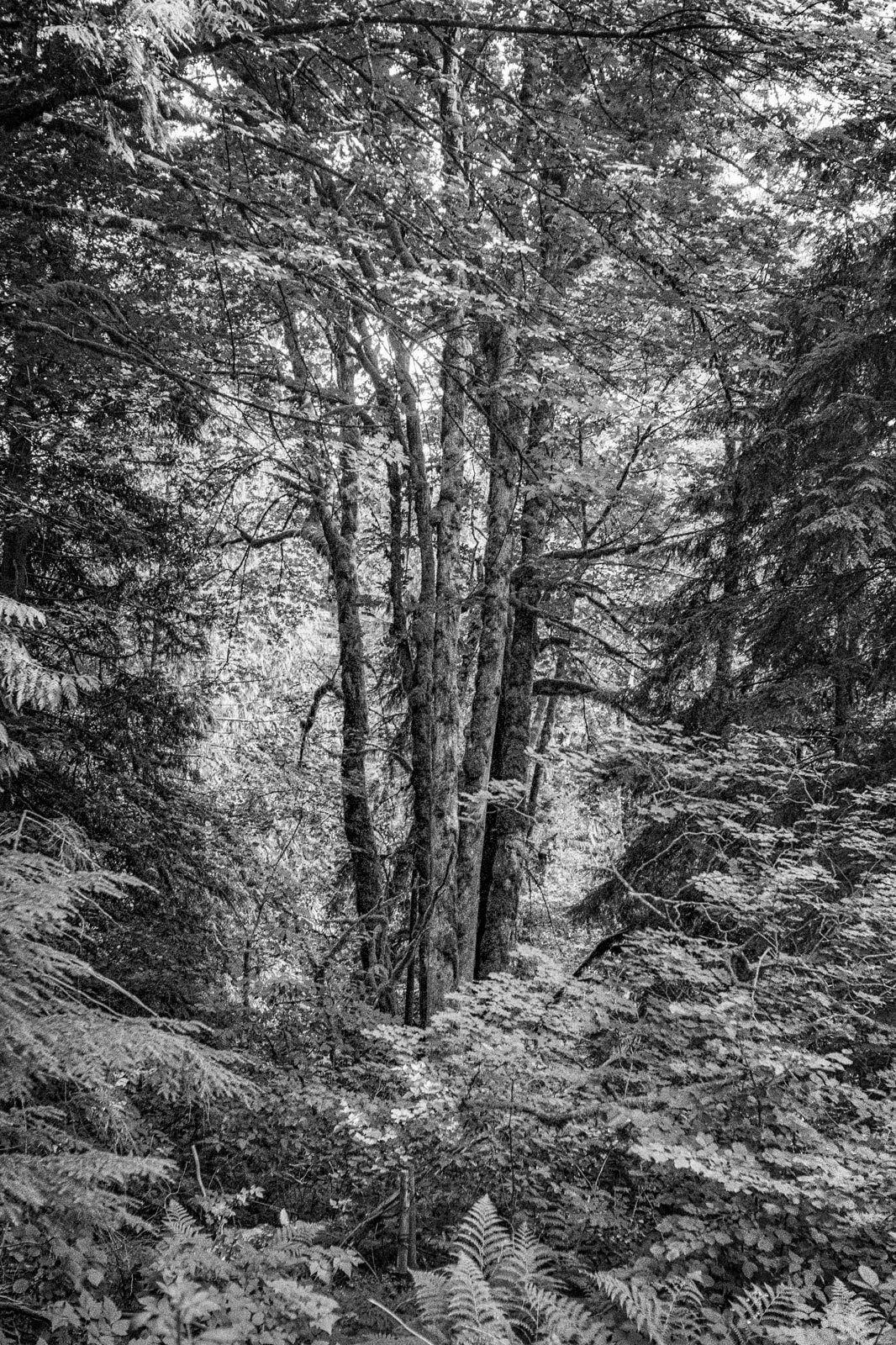This is my Canon Model VI-T (Ser. No.: 603420). The lens is the S 50mm 1:2.8 Canon Lens.
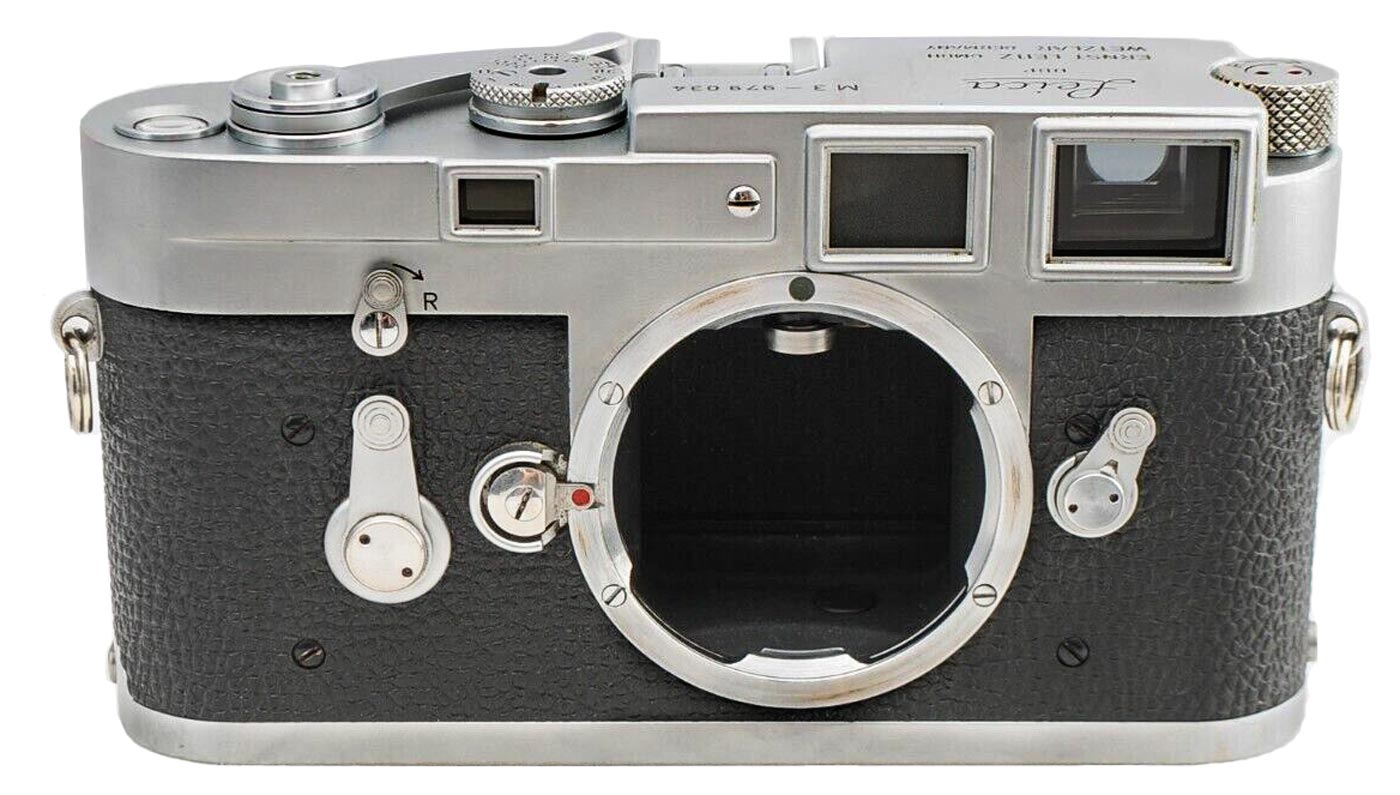
Leitz ended the run of “Barnack” cameras with this, the Leica M3. It was a revelation when introduced in 1954. It defined the form of the 35mm camera until the coming of digital in the 1990’s.
Canon Model VI-T
The decade of the 1960’s was marked by innovation and development in the camera industry. At the beginning in 1960 the “Barnack” style camera was the epitome of 35mm cameras, that and the Contax. Leitz was producing the Leica II’s and III’s and Zeiss was producing the Contax II’s and III’s. These were the serious photographer’s 35mm cameras. And then they were not.
In 1954 Leitz introduced the Leica M3 and suddenly made the “Barnack” style cameras obsolete. At the time Canon was selling the Model IIS and the IV Sb2. And beside the M3’s Canon’s cameras looked dated and old.
Nikon introduced their rangefinder camera, the S2, in the same year. This camera took after the Zeiss Contax and was a solid well built rangefinder. These cameras defined the shape of the rangefinder until they were all overtaken by the SLR revolution.
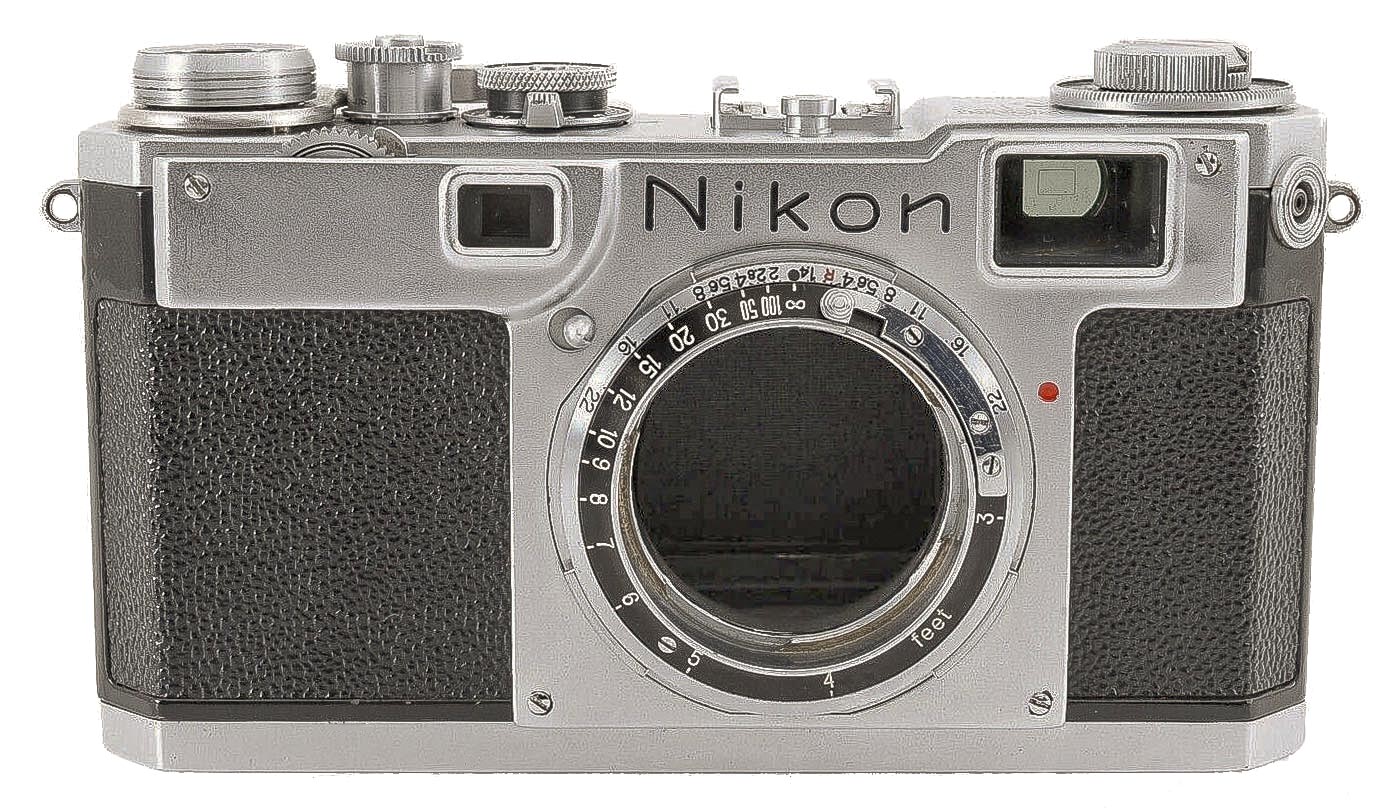
Also introduced in 1954 was the Nikon S2 which was the first Japanese 35mm camera to have a lever film advance and crank film rewind.
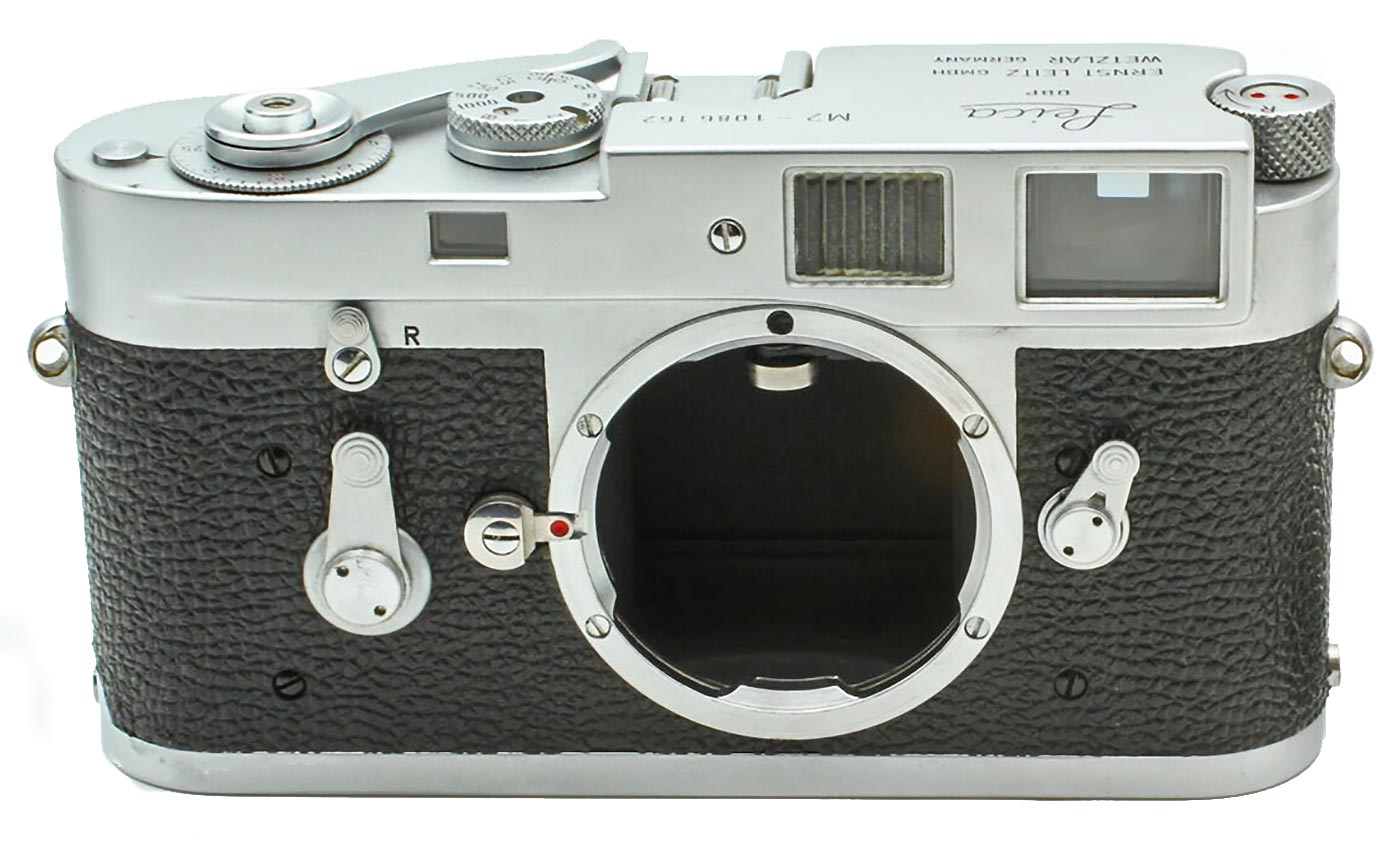
In 1957 Leitz introduced the Leica M2 which was intended to be the economy model of the M3. It was a well built precision instrument just was the M3.
In the year Leitz introduced the M3 Canon announced the IVSB2, a “Barnack” style rangefinder Peter Dechert says was surely the finest bottom loading 35mm rangefinder camera produced by anyone. It had the three magnification viewfinder but it was not a brilliant finder and it had no frame lines. The M3, on the other hand, had frame lines and a very bright image. And it and the Nikon had lever film advance. The Nikon even had a crank rewind. The IVSB2 had knob film wind and rewind. And it just did not look modern.
We have a Newsletter
There is a Newsletter for thecanoncollector.com to keep you up to date on what we are posting. Try it!

This is the IVSB2 introduced the same year as the Leica M3. It was an excellent camera but it was too late and outclassed by the Leica M3.
Caught off guard by the M3 Canon immediately got to work on a new camera initially referred to as the Model V during development. All of this develpoment resulted in the release of the Canon VT in 1956 and although it took the external form of the M3 it was not its equivalent. But improved models continued to follow until in 1958 Canon released the VI-T and VI-L.
These two cameras were essentially the same camera but the VI-T film wind was via a trigger in the bottom plate and the VI-L had a lever winder on the top deck.
Shutter speeds of X, B, 1 to 1000 were on a single dial on the top deck doing away with the slow dial on the front of the camera.
The edge of the shutter speed dial was scalloped allowing for a clip on selenium light meter to couple with with it. This same meter arrangement was later found on the Canon P.
This is my Canon VI-T.
The camera was usually sold with the
S 50mm f/1.2 or the S 50mm f/1.8 lens. In this picture it has the very excellent Canon S 50mm f/2.8 “Zebra” lens.
The rangefinder is considerably improved over the earlier designs. There are the usual three magnifications but the image is brighter and larger. The 35mm setting corresponds to a 35mm lens field of view. There are no frame lines. The 50mm setting has two frame lines corresponding to 50mm and 100mm fields of view. The “Mg” setting is a magnified view of the rangefinder images for more accurate focusing.
The first thing to notice on the front of the camera is the lack of a slow speed dial. The VI-T was Canon’s first camera to conbine all speeds, high and low, onto one shutter speed dial on the top deck.
The small dial beside the equipment shoe indicates the setting of the viewfinder, 35mm, 50mm or “Mg” for Magnification. In the shoe is the domed top of the parallax correction post which moves up and down with focusing.
The viewfinder optics are a reverse Galilean “Alibada” viewfinder which we have already discussed. This is why the frame lines are very stable and independent of the viewer’s eye position. The frame lines are adusted for parallax depending upon focus distance. The 35mm setting is not but assumes, being a wide angle lens, it is not as important. Clip on viewfinders are adjusted for parallax via the paralax pin which we discuss on the page about Accessory Viewfinders.
The actual operation of the camera can be found in the User Instructions.
In summary, then, the new features of the VI-T and VI-L are:
1. New shutter and single non-rotating shutter speed dial;
2. The X setting for strobes fires at 1/55th second;
3. Shutter dial keys into clip-on light meter;
4. Improved viewfinder with parallax corrected frame lines;
This is the film advance trigger in the open or deployed position. Pulling it to the right, in the picture, advances the film in one pull. The Canon handle screws into the tripod socket in the locking key for the camera back.
The film is advanced by the trigger on the bottom plate. However, the flat knob on the right side of the top deck can be pulled up (see the Manual for how) and the film advanced by turning it clockwise. Personally, I prefer this method.
Film rewind is by a crank that stows into a depression in the top deck. In the viewfinder eyepiece you can see the frame lines on the inside of the outer lens. The parallax pin is visible in the equipment shoe.
5. Uses Canon Film Cassette V.
Canon sold about 8,000 VI-T’s and 10,000 VI-L’s. But sales did pick up: in March of 1959 they introduced a simplified VI-L called the Model P which sold over 87,000 copies.
Shooting with the VI-T
So, of course, I had to take my VI-T for a walk. I took it with my S 50mm f/2.8 shown in the photos above and with my S 35mm f/3.5 wide angle lens. And it is a lovely camera. I used to shoot, back in the 1960’s, with a Lieca M3 and this camera is very comparable. And loading the film is so much easier. The viewfinder may not be up to the M3’s but it is a considerable improvement over Canons V series. Certainly it is more than adequate.
I am not a fan of the bottom deck trigger film winder but, fortunately, there is another way. The dial on the extreme right of the top deck pulls up and locks into position and becomes a knob winder. I find that much more satisfactory although it is definitly not as fast. But then, I am not a fast shooter.
“The Garlic Picker” was taken with my S 50mm f/3.5 S 35mm f/3.5.
As I have said before, images taken with a body are pointless because they are a test of the lenses. So long as the body can hold the film still, keep out stray light, and time the exposure, the image is a result of the lens. However, I love pictures so here are two.
I was using Ilford FP5 at ISO 400. The film was processed in Ilfosol 3 and scanned with my Canon R. And I have done some post processing. I like the results.
This is a great camera. It is easy to use, the controls are all in the right place, the film goes in easily, and it is smooth to operate. This is not a camera review and I am not going to rate the VI-T, but, I am going to put a lot of film through it.
This website is the work of R. Flynn Marr who is solely responsible for its contents which are subject to his claim of copyright. User Manuals, Brochures and Advertising Materials of Canon and other manufacturers available on this site are subject to the copyright claims and are the property of Canon and other manufacturers and they are offered here for personal use only.

